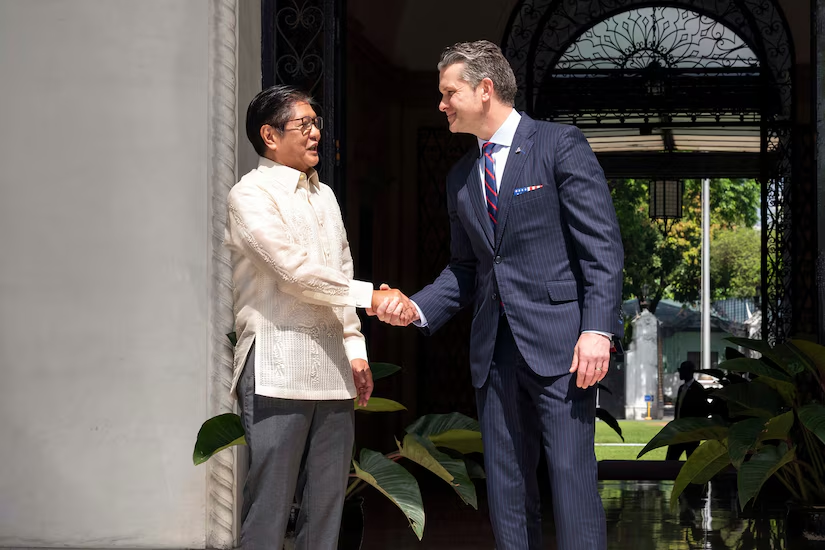
The United States and the Philippines have solidified their commitment to bolstering security and cooperation in the Indo-Pacific region, agreeing on a strategic plan aimed at reestablishing deterrence against potential threats. This agreement signifies a renewed focus on enhancing military ties and addressing shared concerns regarding territorial disputes, particularly in the South China Sea.
Key elements of the plan include joint military exercises, expanded access for U.S. forces to strategic bases in the Philippines, and increased collaboration on maritime security. Both nations emphasized the importance of upholding international law and ensuring freedom of navigation in critical waterways.
The agreement comes amid growing geopolitical tensions in the region, as China’s assertive actions continue to challenge established norms. By strengthening their partnership, the U.S. and the Philippines aim to promote stability, deter aggression, and safeguard the interests of their nations and allies in the Indo-Pacific.
Hegseth spent the first half of the day meeting with Philippine President Ferdinand Marcos Jr. and then with his counterpart, Defense Secretary Gilberto Teodoro Jr. The result of those talks, Hegseth said, was an understanding of how to not just continue with the status quo but to “accelerate the progress in [the] U.S.–Philippines alliance.”
The four-piece plan, which Hegseth said would build upon the United States’ late July 2024 commitment of $500 million to modernize the Philippine military, includes an agreement that the United States will deploy additional advanced military capabilities to the Philippines, plans for bilateral training between both nations for high-end operations, an agreement to prioritize bilateral defense industrial cooperation, and an agreement to launch a bilateral cyber campaign.
Hegseth said the U.S. intends to send additional capabilities to the Philippine military. Most notably, the Defense Department will provide the Philippines with the Navy-Marine Expeditionary Ship Interdiction System, or NMESIS, for Exercise Balikatan this spring.
A combination of multiple proven capabilities, the NMESIS combines a lethal strike missile mounted on the chassis of a joint light tactical vehicle that can be operated remotely.
In addition to the NMESIS, Hegseth said the U.S. would also provide highly capable unmanned surface vehicles for Balikatan, the most prominent annual military exercise between the U.S. and the Philippines.
“These systems will enable U.S. forces and the Armed Forces of the Philippines to train together on using advanced capabilities to defend the Philippines’ sovereignty,” Hegseth said.
Regarding industrial cooperation, he said a joint statement on the topic was released earlier today that identifies multiple priority areas, including co-producing unmanned systems and increased combined logistical support.
“These initiatives will help us share burdens and promote a more comprehensive partnership; we intend for these efforts to boost both of our economies and strengthen supply chain resilience,” he added.
Hegseth said the agreed-upon bilateral cyber campaign would aim to reduce cyber vulnerabilities across the U.S.-Philippines alliance, as well as increase cybersecurity to allow more advanced operational cooperation.
Regarding the bilateral training for high-end operations, Hegseth said U.S. and Philippine special operations forces will train side-by-side in the province of Batanes, approximately 100 miles north of Luzon.
Calling the steps outlined “just the beginning [in] an incredibly fruitful alliance” between the two countries, Hegseth said the U.S. and Philippines would also work together to convince other partners and allies in the Indo-Pacific region to step up their efforts and cooperation to increase their defense capabilities and strengthen deterrence.
Hegseth also said that the U.S.–Philippines alliance “reflects strength” in the face of China’s aggression in the Indo-Pacific and demonstrates a commitment to peace and security in the region.





